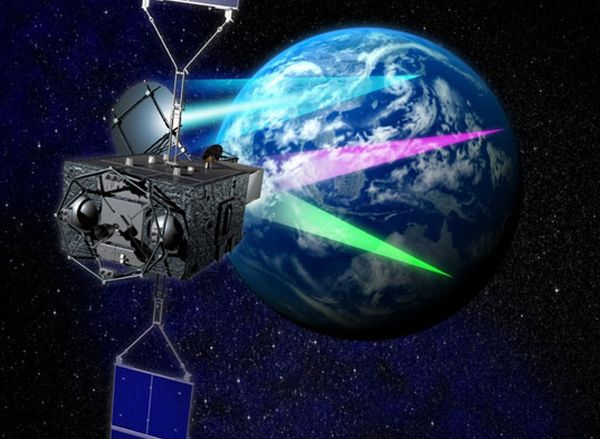
Today, approximately 80% of global energy demand is fulfilled by exploiting fossil fuels like coal, petroleum, and natural gas. By the end of 21st century, entire storage of fossil fuels is expected to be consumed. The problem of fossil fuel exhaustion and global warming can definitely be overcome by the use of alternative unconventional energy resources like solar, wind, geothermal, sea tides etc.
Solar emission is a colossal source of unlimited supply of green energy in form of heat and light. The contribution of solar energy in power production is just only 0.03% of the total world energy. In order to improve the efficient and economical utilization of solar energy, research is in process. In this direction, the SBSP (Space-Based Solar Power) concept has been put forward for exploiting the solar energy from space to convert it into valuable form of electricity. Space solar energy has been found more resourceful for green power production purposes over the terrestrial solar rays and other energy resources as it has
a. 24 hour availability in space in comparison to earth’s surface
b. Undiffused and high intensity of thermal and photovoltaic energy
c. Consistent supply of energy, which is fully independent and uninterrupted above environmental factors as compare to intermittent supply in case of wind, tidal or ground-based solar energy.
d. Emission free unlike green gases from fossil fuel and radioactive wastes from nuclear energy.
The inspiration
The proposal of Space-based Solar Power (SBSP) or Satellite Solar Power System concept was put forward in November 1968. Peter Glaser, a scientist, claimed for a U.S. patent in the year 1973 for having a schematic model to transmit the collected space solar energy to Earth’s surface in form of microwave or LASER beam with the help of satellite transmitter, which is further received by huge antenna of about one square kilometer in area (Or Rectenna), located at the ground. The concept was reinforced by few researchers of Japan and USA, who have successfully experimented transmission of microwave energy between two islands apart about 190 kilometers from each other.
Eco credentials
a. The building blocks
For a Space-based Solar Power system, basically three technical elements are required:
- A system like solar satellite for capturing enormous quantities of space solar energy.
- A powerful transmitting antenna to beam down the solar energy from space to earth, through clusters of microwave or LASER.
- A ground receiver to collect the power beam sent from space (rectenna).
b. Sustainability
Exploitation of solar energy is quite sustainable as it has no environmental impact like other current traditional sources used for generation of electricity. Space based solar system can collect the huge amount of power from sun that would be sufficient to fulfill almost each of our electrical need. Even, Space solar power can afford the required clean power for any upcoming electric transportation system or driving heavy machinery in a company.
c. The hurdles
Although the concept SPBP is, no doubt, a great idea of having a chief resource for consistent energy supply, a number of problems are also concerned with the project. Some of them are discussed as below:
i. Large size of Space Solar system
To meet with enormous amount of solar energy in the space, a solar satellite must be large. It is expected that the size of satellite will be greater than even the largest space station (ISS; international space station) built till date. Establishment of a solar power system at the Earth’s ground is very easy. However, launching a space solar power satellite to a correct orbit still requires a lot of attention as well as huge economy.
ii. Higher launching cost
Existing launch vehicles are very much expensive and adapted for carrying satellites with a limited weight capacity. Establishment of a huge solar satellite will be required too many rounds of a launch vehicle between space to earth, which will have much higher cost as compare to set up a normal weather satellite.
iii. Lack of ecofriendly launch vehicles
Elevated launch frequency may have resulted into colossal pollution problems with severe emissions. Thus, the availability of ecofriendly launch vehicle with cheaper rates is still a problem.
iv. Fragility and space wreckage
As the space atmosphere is much antagonistic, a rather toughened space solar panel is needed in terms of durability and longer life. The accidents of system breakage may increase space wastage.
v. Inefficient power transmission
Microwave transmittance with lower loss is required to get maximum benefit. Till now no such machine is available to transmit energy from such a large distance with full efficiency.
vi. Other side effects
The broadcasting frequency of microwaves may harm other satellites. Microwave can cause serious injuries wildlife, especially birds and even aircrafts, flying through its path.
d. Is it feasible?
The feasibility of SPBP concept into a true story is still a big topic of discussion. The main controversy is correlated with microwave power transmission as well as efficient transmission. Japan Space Agency has invested a lot of money to build a space based solar prototype to be fully functionalized in 2030. United States of America Based space agency NASA has also shown keen interest to produce green energy by utilizing space based solar energies. So, it can assume about the day, which is not so far to factualize the dream of SBSP concept.




